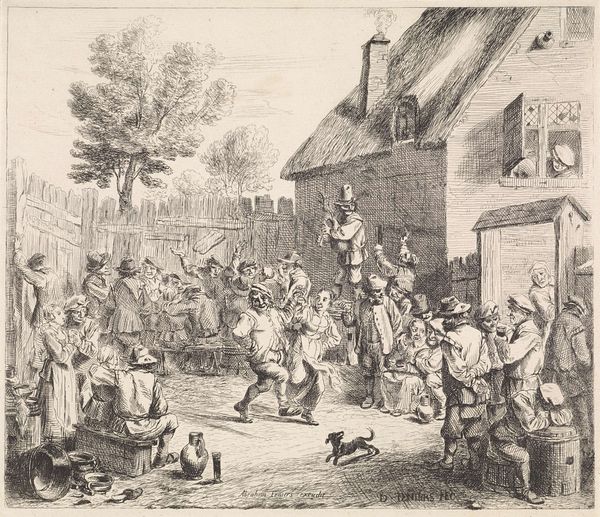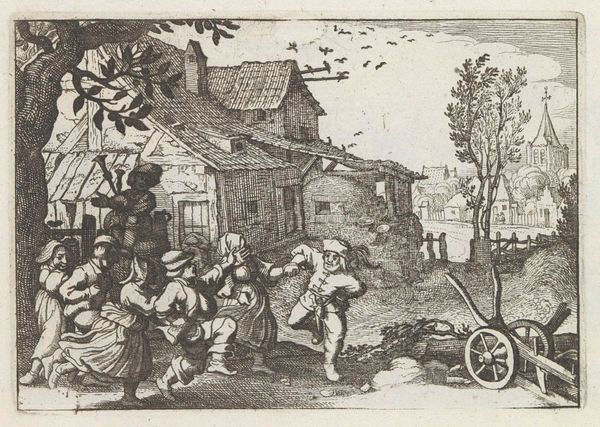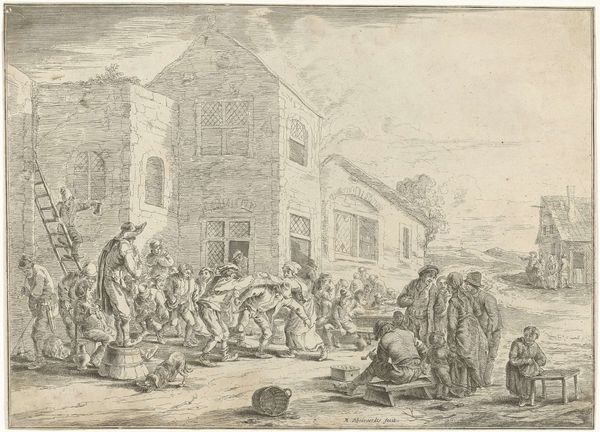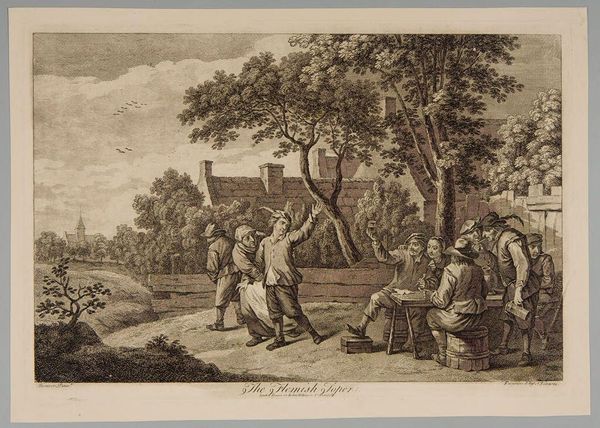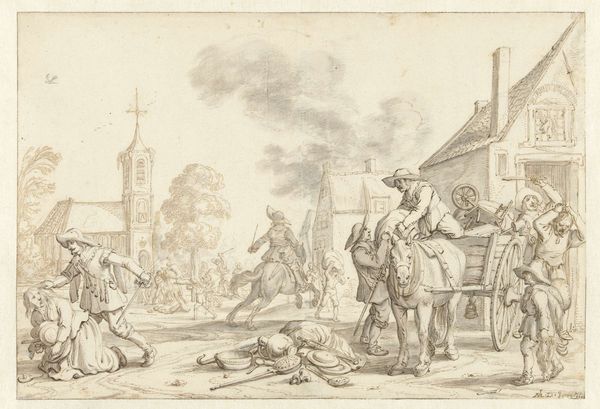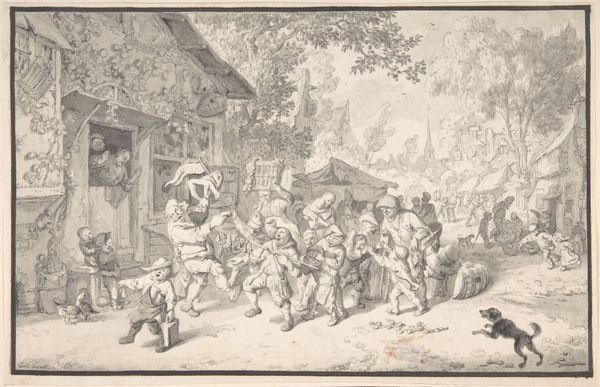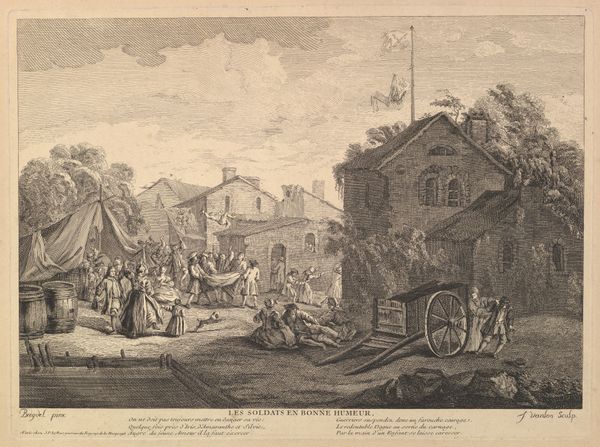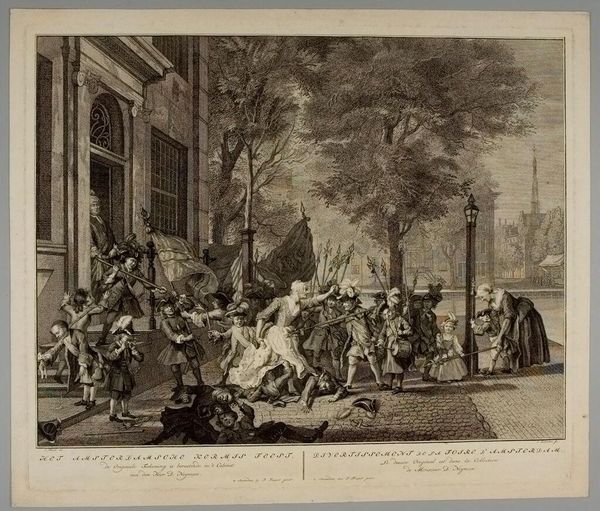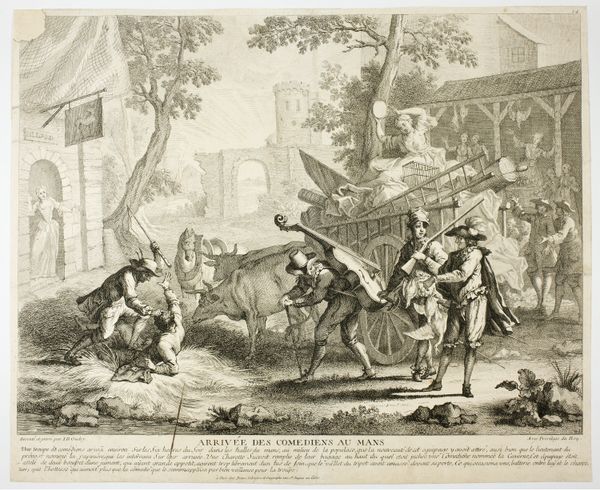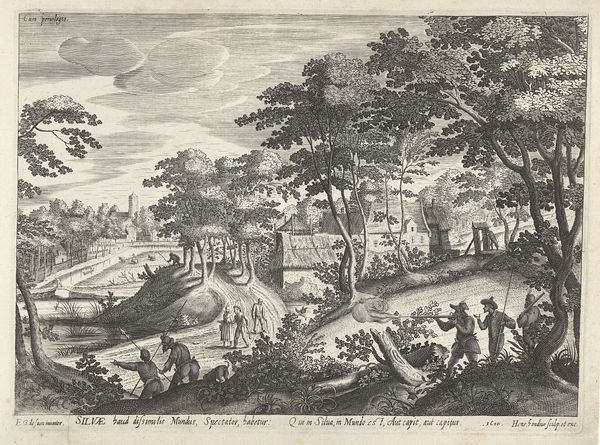
June: Sheep-Shearing (from a Series of Twelve Months) 17th-18th century
0:00
0:00
Dimensions: sight: 22.3 x 30.3 cm (8 3/4 x 11 15/16 in.)
Copyright: CC0 1.0
Curator: This is "June: Sheep-Shearing," attributed to Claude Simpol, a drawing from a series depicting the twelve months. It presents a pastoral scene of rural labor. Editor: There’s a languid stillness despite all the activity—the figures seem heavy, grounded. The monochromatic palette adds to this sense of quiet labor. Curator: The scene is steeped in symbolism, especially of the agricultural cycle and communal labor. Sheep shearing in June signifies abundance, but also a precarity tied to seasonal work. Look at how the act is centered—almost a ritualized performance, bound by gendered divisions of labor. Editor: The shepherd tending his flock in the background against the houses, the shearers, the spinners…the image speaks to a continuum of care. The presence of the sheep itself carries symbolic weight. Its fleece, the raw material, represents sustenance and trade. Curator: Absolutely, and the composition reinforces that interconnectedness—the way the figures are clustered suggests a tightly knit social fabric dependent on this seasonal rhythm. Editor: The artist prompts us to consider labor as a source of both material production and cultural identity. Food, clothing, and culture all from this one moment. Curator: It’s fascinating to see how Simpol captures the complex interplay of humans, animals, and landscape in this depiction of June. Editor: It leaves me pondering how we might reconsider our relationship with these interconnected systems of production.
Comments
No comments
Be the first to comment and join the conversation on the ultimate creative platform.
